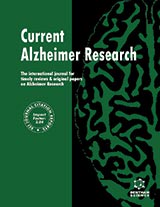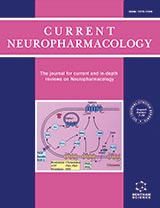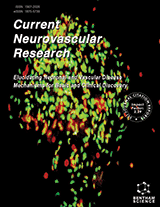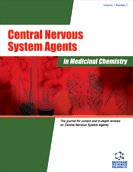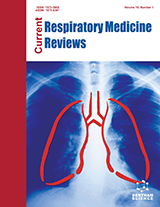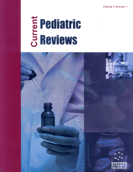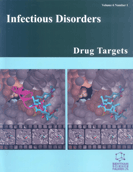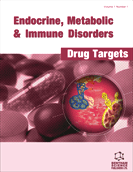摘要
背景:日常生活工具活动(IADL)是一种复杂的活动,涉及多种认知过程,容易受到认知的早期影响。损伤。以线人为基础的问卷是评估痴呆患者IADL表现的最常用工具,但在早期损伤阶段必须加以调整。 目的:探讨认知功能减退(无认知下降-主观认知功能减退-轻度认知功能损害-轻度痴呆-中度认知功能衰退)在认知功能障碍(IADL)上的差异。痴呆症)使用西班牙版的阿姆斯特丹IADL问卷(A-IADL-Q)。 方法:包括500名志愿者:88名无认知减退症状的参与者,109名主观认知投诉的参与者,114名轻度认知功能减退的参与者。轻度痴呆81例,中度痴呆108例。评估IADL的方法是A-IADL-Q,这是一份计算机化的自适应问卷,计算的是核心根据每个参与者的具体反应模式。资料采用ANOVAS和回归分析。用多项Logistic回归分析评价ca。A-IADL-Q的频域区分诊断组. 结果:无认知下降和主观认知功能下降的受试者A-IADL-Q得分高于MCI组,MCI组高于MCI组。痴呆症患者。A-IADL-Q对非认知障碍和痴呆有很好的鉴别能力,对非认知功能障碍和MCI的区分程度显著但低。 结论:α-IADL-Q能在不同痴呆谱组间鉴别IADL的功能.
关键词: 日常生活工具活动、阿姆斯特丹IADL问卷、日常活动、主观认知能力下降、轻度认知障碍、痴呆、多项Logistic回归分析。
Current Alzheimer Research
Title:Assessing Everyday Activities Across the Dementia Spectrum with the Amsterdam IADL Questionnaire
Volume: 15 Issue: 13
关键词: 日常生活工具活动、阿姆斯特丹IADL问卷、日常活动、主观认知能力下降、轻度认知障碍、痴呆、多项Logistic回归分析。
摘要: Background: Instrumental activities of daily living (IADL) are complex activities which involve multiple cognitive processes, and which are expected to be susceptible to the early effects of cognitive impairment. Informant-based questionnaires are the most common tools used to assess IADL performance in dementia, but must be adjusted for use in early stages of impairment.
Objective: To investigate the differences in IADL on the continuum of cognitive decline (i.e. no cognitive decline - subjective cognitive decline - mild cognitive impairment- mild dementia - moderate dementia) using the Spanish version of the Amsterdam IADL Questionnaire (A-IADL-Q).
Methods: A total of 500 volunteer participants were included: 88 participants with no signs of cognitive decline, 109 participants with subjective cognitive complaints, 114 participants with mild cognitive impairment (MCI), 81 participants with mild dementia and 108 participants with moderate dementia. IADL was assessed with the A-IADL-Q, a computerized and adaptive questionnaire that calculates scores according to the specific pattern of responses of each participant. The data were examined by ANOVAs and regression analysis. Multinomial logistic regression analysis was used to evaluate the capacity of the A-IADL-Q to distinguish between diagnostic groups.
Results: Participants with no cognitive decline and those with subjective cognitive decline obtained higher A-IADL-Q scores than MCI participants, and participants with MCI obtained higher scores than patients with dementia. The A-IADL-Q showed excellent discrimination between non-cognitive impairment and dementia, and significant but low discrimination between non-cognitive impairment and MCI.
Conclusion: A-IADL-Q can discriminate IADL functioning between groups across the dementia spectrum.
Export Options
About this article
Cite this article as:
Assessing Everyday Activities Across the Dementia Spectrum with the Amsterdam IADL Questionnaire, Current Alzheimer Research 2018; 15 (13) . https://dx.doi.org/10.2174/1567205015666180925113411
| DOI https://dx.doi.org/10.2174/1567205015666180925113411 |
Print ISSN 1567-2050 |
| Publisher Name Bentham Science Publisher |
Online ISSN 1875-5828 |
 40
40
- Author Guidelines
- Graphical Abstracts
- Fabricating and Stating False Information
- Research Misconduct
- Post Publication Discussions and Corrections
- Publishing Ethics and Rectitude
- Increase Visibility of Your Article
- Archiving Policies
- Peer Review Workflow
- Order Your Article Before Print
- Promote Your Article
- Manuscript Transfer Facility
- Editorial Policies
- Allegations from Whistleblowers
- Announcements
Related Articles
-
The Toll-Like Receptor Radical Cycle Pathway: A New Drug Target in Immune-Related Chronic Fatigue
CNS & Neurological Disorders - Drug Targets Platelet Resistance to Antiplatelet Drugs
Recent Patents on Cardiovascular Drug Discovery Editorial [Hot Topic: Innate Immune Responses in CNS Neurodegenerative Diseases (Guest Editors: Hans van Noort and Sandra Amor)]
CNS & Neurological Disorders - Drug Targets Ivabradine: Cardiovascular Effects
Recent Patents on Cardiovascular Drug Discovery Frailty Among Alzheimer’s Disease Patients
CNS & Neurological Disorders - Drug Targets The Prevalence, Morbidities, and Treatments of Insomnia
CNS & Neurological Disorders - Drug Targets Analysis of Homocysteine in Plasma of Rats Exposed to High-fat Diet and Chronic Unpredictable Mild Stress by LC/ESI-MS/MS
Current Analytical Chemistry Neuroscience of Exercise: Association Among Neurobiological Mechanisms and Mental Health
CNS & Neurological Disorders - Drug Targets The Risk of Adverse Drug Reactions in Older Patients: Beyond Drug Metabolism
Current Drug Metabolism Neuropsychiatric Involvement in Systemic Lupus Erythematosus:Current Therapeutic Approach
Current Pharmaceutical Design Biological Mechanisms Linking Alzheimer's Disease and Type-2 Diabetes Mellitus
CNS & Neurological Disorders - Drug Targets N-[3,5-Bis(trifluoromethyl)phenyl]-5-bromo-2-hydroxybenzamide Analogues: Novel Acetyl- and Butyrylcholinesterase Inhibitors
Current Topics in Medicinal Chemistry Incidence and Prevalence of Hypothyroidism in Patients Affected by Chronic Heart Failure: Role of Amiodarone
Endocrine, Metabolic & Immune Disorders - Drug Targets A Comprehensive Investigation of Molecular Signatures and Pathways Linking Alzheimer’s Disease and Epilepsy <i>via</i> Bioinformatic Approaches
Current Alzheimer Research Peptide5 Attenuates rtPA Related Brain Microvascular Endothelial Cells Reperfusion Injury via the Wnt/β-Catenin Signalling Pathway
Current Neurovascular Research To Cardiovascular Disease and Beyond: New Therapeutic Perspectives of Statins in Autoimmune Diseases and Cancer
Current Drug Targets The Role of Annexin A1 and Formyl Peptide Receptor 2/3 Signaling in Chronic Corticosterone-Induced Depression-Like behaviors and Impairment in Hippocampal-Dependent Memory
CNS & Neurological Disorders - Drug Targets Chronic Diseases and COVID-19: A Review
Endocrine, Metabolic & Immune Disorders - Drug Targets Current Therapeutic Advances in Patients and Experimental Models of Huntington's Disease
Current Drug Targets Anti-Amyloidogenic and Anti-Apoptotic Role of Melatonin in Alzheimer Disease
Current Neuropharmacology


